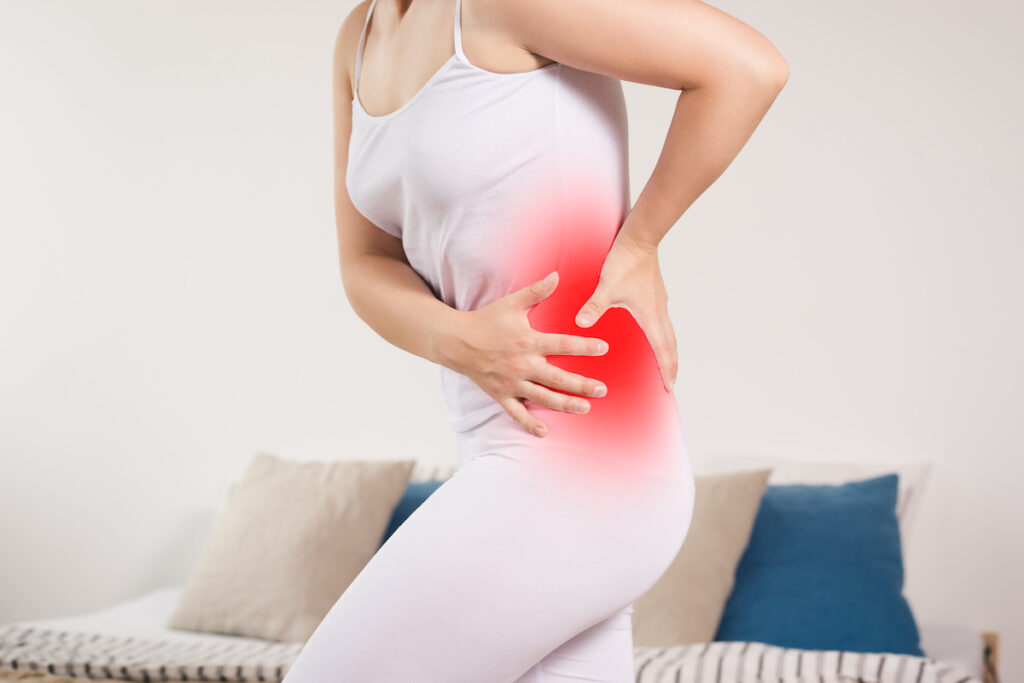Hip Pain & Osteoarthritis
When Hip Pain Comes from Wear-and-Tear
Hip osteoarthritis is a condition where the smooth cartilage that cushions the hip joint wears away. This can lead to pain, stiffness, and reduced movement.
Why the Hip Is Prone to Osteoarthritis
The hip is a ball-and-socket joint that carries much of your body weight. Over time, the protective cartilage that allows smooth, pain-free motion can thin out. When this happens, the bones rub against each other, causing stiffness, swelling, and pain.
Common Causes and Risk Factors
Hip osteoarthritis develops slowly and is influenced by several factors:
- Ageing: natural wear-and-tear of the joint
- Previous injuries: fractures or dislocations that damage cartilage
- Genetics: family history of osteoarthritis
- Lifestyle factors: obesity, physically demanding jobs, or repetitive activities
- Structural problems: conditions like hip dysplasia that affect alignment
Symptoms That May Point to Hip Osteoarthritis
Signs often begin gradually and worsen over time. They may include:
- Groin or thigh pain, especially during or after activity
- Stiffness in the hip, particularly after sitting or sleeping
- Reduced range of motion, making it hard to bend or rotate the hip
- A grinding or clicking sensation in the joint
- Limping or difficulty walking long distances
How Doctors Diagnose Hip Osteoarthritis
Because hip pain can come from different sources, proper diagnosis is important. A consultation may involve:
- Physical examination: testing hip flexibility and strength
- Imaging: X-rays to assess joint space and bone changes; MRI if soft tissues are involved
- Medical history: reviewing previous injuries or family history of joint disease
Treatment Options for Hip Osteoarthritis
Treatment depends on the severity of symptoms and lifestyle needs:
- Non-surgical care: physiotherapy, weight management, activity modification, and medications for pain relief
- Injections: such as corticosteroid or regenerative injections for targeted relief
- Minimally invasive surgery: hip arthroscopy may be used in selected cases
- Hip replacement surgery: considered when pain is severe and daily activities are limited despite other treatments
Living with Hip Osteoarthritis
Hip arthritis can affect everything from standing up after sitting to enjoying walks with family. While it can’t be reversed, treatment can help manage symptoms and maintain mobility. Staying active with low-impact exercises such as swimming or cycling often helps, alongside lifestyle changes to reduce strain on the joint.
Frequently Asked Questions (FAQ)
1. Is hip osteoarthritis only seen in older people?
It is more common with age, but younger people can develop it too, especially after injuries or due to structural problems like hip dysplasia.
2. Can hip arthritis be cured without surgery?
There is no cure for arthritis, but non-surgical treatments can significantly reduce symptoms and improve mobility.
3. When should I consider hip replacement surgery?
If pain is persistent, interferes with sleep, or limits daily activities despite non-surgical care, hip replacement may be considered.
4. Can exercise make hip arthritis worse?
High-impact sports may worsen symptoms, but low-impact exercises like swimming, cycling, and walking usually help strengthen the joint.
5. What happens if hip arthritis is left untreated?
Symptoms may gradually worsen, leading to more stiffness, pain, and reduced independence.
Book a Consultation for Hip Pain or Arthritis
If hip pain is affecting your daily life, book an appointment at Mash Spine & Orthopaedics for an assessment and personalised treatment plan.





